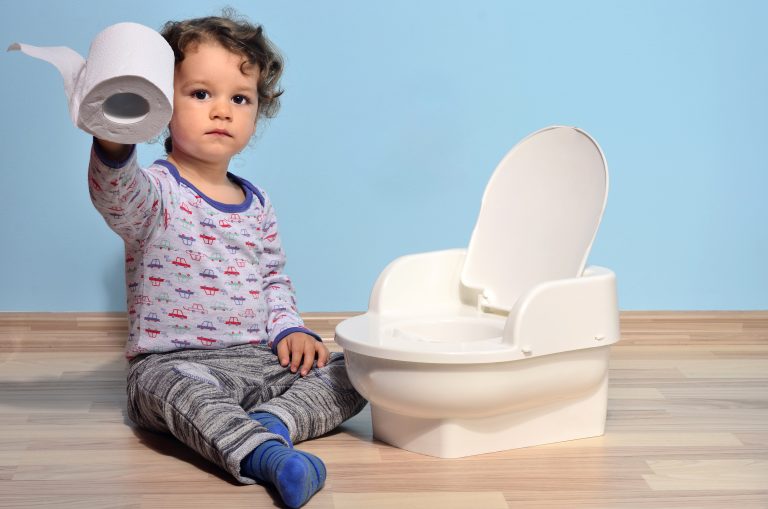When Do Babies Drop to 2 Naps? The Perfect Nap Transition
Are you a new parent struggling to navigate the complexities of your baby’s sleep schedule? Do you wonder when do babies drop to 2 naps? Are you feeling overwhelmed by the thought of transitioning your little one from three naps to two? The nap transition can be a challenging phase in a baby’s sleep development, and it’s essential to be attuned to their subtle cues.
In this article, “When Do Babies Drop to 2 Naps? The Perfect Nap Transition” we’ll explore the signs that indicate your baby is ready for the nap transition and expert tips on making the switch to a two-nap schedule a seamless process. So, are you ready to gain insights into your baby’s sleep journey and set the foundation for better rest and overall well-being? Let’s dive in!
Signs Your Baby is Ready for Nap Transition

Transitioning your baby from 3 naps to 2 is a momentous milestone in their sleep development. It’s essential to be attuned to subtle signs indicating their readiness for this shift. Here are the key indicators that suggest your 6 to 8-month-old is poised for the nap transition:
Changes in Sleep Patterns
Noticeable alterations in your baby’s sleep patterns can be a significant clue. Look for shifts in the duration and timing of their naps, indicating a need for adjustment to accommodate the transition.
Increased Wake Windows
More extended periods of wakefulness during the day signal that your baby might be ready for fewer naps. Pay attention to extended time intervals between sleep sessions as a sign of readiness for transitioning to 2 naps.
Signs of Daytime Sleep Regression
If you observe disruptions in your baby’s daytime sleep routines, such as frequent short naps or difficulty settling down for naps, it could indicate the need for a transition to 2 naps to support more consolidated and restful sleep.
Remember, each baby is unique, and readiness for nap transitions can vary. Observing these signs can guide you in determining the ideal time to adjust your baby’s nap schedule for optimal rest and overall well-being.
Understanding the Third Nap Dilemma
As your little one grows and reaches the age of 6-8 months, you may start noticing some subtle shifts in their sleep patterns. One common dilemma that many parents face during this stage is the decision to transition from three naps to two. Let’s delve deeper into understanding the dynamics of the third nap and how to navigate this transitional period with confidence.
Signs Your Baby Is Ready to Drop the Third Nap
Shorter Nap Durations If you observe that your baby’s third nap is becoming increasingly short and fragmented, it may indicate that they are consolidating their daytime sleep.
Extended Wake Windows Your baby might show signs of being able to stay awake for longer stretches without becoming overtired, suggesting they are ready to transition to a two-nap schedule.
Expert Advice on Transitioning Smoothly
Here are some tips from renowned sleep experts to help you manage the third nap dilemma effectively:
“Observing your baby’s cues and responses to changes in their daytime sleep can provide valuable insights into their readiness to drop the third nap.” Sleep Expert Dr. Rebecca Jones
“Gradually shifting your baby’s nap schedule by slightly extending wake times between naps can ease the transition and prevent overtiredness.” Pediatric Sleep Consultant Emily Patel
Sample Nap Schedule for a Smooth Transition
- Morning Nap (9:00 AM – 10:30 AM)
- Afternoon Nap (1:30 PM – 3:00 PM)
By understanding the subtle cues and implementing expert strategies, you can navigate the third nap dilemma smoothly and ensure a seamless transition to a two-nap schedule, setting the foundation for better sleep quality for both you and your little one.
Recognizing Changes in Wake Windows

As your baby approaches the age when dropping to 2 naps becomes appropriate, keep a close eye on their wake windows. Understanding the signs that indicate your little one is transitioning to a different sleep schedule can help you navigate this phase with confidence. Here’s how to recognize these changes:
1. Observing Increased Alertness
One of the first signs of readiness to drop the third nap is heightened alertness during wake periods. Your baby may appear more engaged, active, and less inclined to fall asleep easily during these times. This shift in behavior is a clear indicator that their sleep needs are evolving.
2. Extended Periods of Activity
Notice if your baby is staying awake for longer stretches without showing signs of fatigue. Longer wake windows between naps suggest that they are consolidating their sleep and may be ready to transition to a two-nap schedule.
3. Delayed Afternoon Sleepiness
If your baby is resisting their third nap or showing less interest in it, it could be a sign that they are naturally gravitating towards a schedule with two longer naps instead of three shorter ones. Pay attention to their behavior in the late afternoon to gauge their readiness for this change.
4. Consistent Changes in Nap Duration
As your baby prepares for the transition to 2 naps, you may notice shifts in the duration of their morning and afternoon naps. Shorter morning naps or prolonged afternoon naps could indicate a shift in their circadian rhythm, signaling the need for a new nap schedule.
Recognizing the changes in your baby’s wake windows is crucial to ensuring a smooth transition to a two-nap routine. By being attuned to their natural rhythms and sleep patterns, you can help them adjust seamlessly to this new phase of their sleep journey.
Understanding these subtle shifts in your baby’s wake windows is key to determining the best time to make the switch to 2 naps. By paying attention to their behavior and sleep patterns, you can ensure a smoother transition that supports their evolving sleep needs.
Managing Sleep Regression During Transition
During the transition from three naps to two, it’s common to experience sleep regression. This temporary setback can be due to your baby adjusting to the new nap schedule and increased wake windows. Recognizing the signs of sleep regression can help you navigate this phase with more ease.
Signs of Sleep Regression
- Increased fussiness during nap times
- Difficulty falling asleep or staying asleep
- Shorter naps or frequent night awakenings
Expert Tips for Managing Sleep Regression
To help your baby cope with sleep regression during the transition process, consider these expert tips:
Maintain a Consistent Bedtime Routine
Stick to a consistent bedtime routine to help signal to your baby that it’s time to wind down and sleep.
Create a Calm Sleep Environment
Ensure the sleep environment is conducive to quality rest, with minimal distractions and soothing elements.
Implement Soothing Techniques
Use gentle soothing techniques like soft music, white noise, or gentle rocking to help your baby relax and fall asleep.
Monitor Wake Windows
Keep track of your baby’s wake windows and adjust nap times accordingly to prevent over-tiredness.
Sleep regression during nap transitions is normal and temporary. Consistency and patience will help your baby adjust smoothly.
Managing sleep regression requires understanding your baby’s cues and being adaptable with their evolving sleep needs.
Importance of Establishing a New Nap Schedule

Establishing a new nap schedule for your baby is a critical part of ensuring their overall well-being and development. As your little one grows and reaches the age where transitioning from three to two naps becomes necessary, it’s important to recognize the significance of this change in their sleep routine. Let’s dive deeper into why establishing a new nap schedule is crucial during this phase.
Understanding the Impact on Sleep Quality
A well-structured nap schedule plays a vital role in maintaining your baby’s sleep quality. Transitioning from three to two naps helps consolidate sleep cycles, leading to more restful and uninterrupted periods of sleep for your little one. By carefully planning and adjusting the nap schedule, you can optimize the duration and timing of naps to align with your baby’s natural sleep rhythms.
Promoting Consistent Wake Windows
One of the key benefits of establishing a new nap schedule is the promotion of consistent wake windows throughout the day. By spacing out the remaining two naps strategically, you can ensure that your baby stays well-rested and alert during their awake times. This consistency not only supports healthy sleep patterns but also aids in regulating your baby’s mood and overall well-being.
Creating a Predictable Routine
A new nap schedule provides the framework for a more predictable daily routine for both you and your baby. Predictability is essential for babies, as it helps them feel secure and understand what to expect throughout the day. By following a structured nap schedule, you can create a sense of stability and comfort for your little one, leading to smoother transitions between sleep and wake times.
Expert Insights and Guidance
Navigating the transition from three to two naps can be a challenging process for parents. Seeking advice from sleep experts and professionals can offer valuable insights and guidance on establishing a new nap schedule tailored to your baby’s specific needs. Expert recommendations can help you address any obstacles or concerns along the way, ensuring a smoother transition for both you and your baby.
Sample Nap Schedule: A Practical Approach
To help you kickstart the process of establishing a new nap schedule, here’s a sample routine that you can consider adopting for your 6 to 8-month-old baby:
- Morning Nap (9:00 AM – 10:30 AM)
- Afternoon Nap (1:30 PM – 3:00 PM)
Following a structured nap schedule like this can provide a solid foundation for transitioning your baby from three to two naps.
Expert Tips for a Smooth Nap Transition
Transitioning your baby from 3 naps to 2 can be a significant step in their sleep routine. Here are some expert tips to help you navigate this important milestone with confidence:
1. Observe Your Baby’s Sleep Cues
- Pay close attention to your baby’s behavior and cues throughout the day.
- Look for signs of drowsiness or increased irritability, which may indicate readiness to drop a nap.
- Keep track of your baby’s wake windows and nap duration to identify patterns that suggest they are transitioning naturally.
2. Gradually Adjust Nap Times
- If your baby is showing signs of being ready to drop a nap, start by gradually shifting the timing of their naps.
- Adjust nap times by 15-30 minutes each day to ease the transition without disrupting their sleep schedule too drastically.
3. Create a Relaxing Nap Environment
- Ensure that your baby’s nap environment is conducive to sleep by keeping the room dark, quiet, and at a comfortable temperature.
- Develop a calming pre-nap routine to signal to your baby that it’s time to wind down and prepare for sleep.
4. Offer Comfort and Support
- During the nap transition period, your baby may experience some resistance to the changes. Provide comfort and reassurance to help them feel secure during this adjustment phase.
- Offer soothing techniques such as gentle rocking, white noise, or a favorite comfort item to help your baby settle into their new nap routine.
5. Stay Consistent with Routine
- Consistency is key when it comes to nap transitions.
- Stick to a predictable daily routine to help your baby adjust smoothly to the changes.
- Maintain consistent nap and wake times to establish a sense of security and predictability for your little one.
6. Seek Professional Advice if Needed
- If you’re facing challenges during the nap transition process, don’t hesitate to seek support from a pediatric sleep expert or healthcare provider.
- Professional guidance can provide tailored strategies and insights to address specific difficulties and ensure a smoother transition for both you and your baby.
Dealing with Less Joy and More Sleep

When your baby is ready to transition from three naps to two, you may notice a shift in their demeanor. While this phase can bring about positive changes in their sleep patterns, it is common for some babies to exhibit signs of being less cheerful due to increased sleep needs. Let’s explore how to navigate this transition with understanding and support.
Recognizing the Signs
- Your baby might seem more subdued or less animated during awake times.
- They could display moments of fussiness or clinginess, indicating a need for more rest.
- Reduced interest in activities or toys that usually bring them joy may also be observed.
Strategies for Support
During this transition, it’s essential to focus on creating a calm and soothing environment to help your baby adjust. Here are some strategies to consider:
1. Establishing a Relaxing Bedtime Routine
A consistent bedtime routine can set the stage for a restful night’s sleep and positively impact daytime naps.
2. Encouraging Gentle Play
Engage in calming activities before nap times to prepare your baby for a smooth transition to sleep.
3. Prioritizing Quality Sleep
Ensure your baby’s sleep environment is conducive to quality rest, with minimal distractions and a comfortable sleep space.
“During nap transitions, it’s crucial to listen to your baby’s cues and provide the necessary support for their changing sleep needs. While it’s natural to experience some adjustments, being attuned to your baby’s signals can help smooth the transition process,” says Dr. Sarah Johnson, a renowned sleep expert.
Ensuring Your Little One Gets Enough Sleep
Moving from 3 naps to 2 is a notable shift in your baby’s sleep routine, and ensuring they get sufficient rest during this adjustment period is crucial for their overall well-being. Here are some expert-backed strategies to help you navigate this transitional phase smoothly:
1. Prioritize Proper Nap Timing
To support your baby’s sleep needs, it’s important to establish a consistent nap schedule that aligns with their natural sleep rhythms. Aim for regular nap times to promote a sense of predictability and enhance sleep quality.
2. Create a Relaxing Nap Environment
Prepare a peaceful sleep space for your little one by minimizing distractions and ensuring optimal conditions for rest. Keep the room comfortably cool, dim the lights, and use soothing sounds to cue your baby that it’s nap time.
3. Monitor Wake Windows
Keep an eye on your baby’s wake windows to identify the ideal times for naps without them becoming overtired. Balancing the right amount of awake time between naps is key to preventing sleep disruptions.
4. Implement a Wind-Down Routine
Establishing a calming pre-nap routine can signal to your baby that it’s time to unwind and prepare for sleep. Incorporate activities like gentle rocking, soothing music, or reading a book to create a relaxing transition to naptime.
5. Stay Consistent and Patient
Consistency is key when introducing changes to your baby’s nap schedule. Be patient and allow time for your little one to adapt to the new routine, knowing that consistency and persistence will lead to successful nap transitions.
By following these recommendations and being attuned to your baby’s sleep signals, you can help ensure a smoother transition from 3 naps to 2. Prioritizing your baby’s sleep needs and establishing healthy nap habits will contribute to a more peaceful and predictable routine for both you and your little one.
9 Benefits of a Consistent Napping Routine

When it comes to your baby’s sleep patterns and overall well-being, establishing a consistent napping routine can offer numerous advantages. Here are the key benefits to consider:
1. Improved Sleep Quality
Maintaining a regular nap schedule can lead to better quality sleep for your little one. Consistency helps regulate their internal body clock, leading to more restful and rejuvenating naps throughout the day.
2. Enhanced Cognitive Development
Consistent napping routines play a crucial role in supporting your baby’s cognitive development. Studies have shown that adequate daytime rest can enhance memory consolidation, learning abilities, and overall brain function.
3. Balanced Mood and Behavior
Adequate daytime naps are essential for regulating emotions and behavior in infants. A consistent napping routine helps prevent overtiredness, reducing the likelihood of crankiness or irritability during waking hours.
4. Support for Physical Growth
Nap time is not only crucial for mental development but also for physical growth. A regular napping schedule provides the necessary downtime for your baby’s body to rest and recover, promoting healthy growth and development.
5. Strengthened Immune System
Adequate rest is vital for maintaining a robust immune system. Consistent napping routines can help boost your baby’s immune response, reducing the risk of illnesses and enhancing overall health.
6. Parental Well-being
A structured napping routine benefits not only your baby but also you as a parent. Predictable nap times allow you to plan your day more effectively, giving you moments of respite to recharge and attend to other responsibilities.
7. Improved Nighttime Sleep
Believe it or not, a well-established nap routine during the day can positively impact your baby’s nighttime sleep. Quality naps contribute to a well-rested baby, leading to more consolidated and restful sleep at night.
8. Enhanced Bonding Opportunities
Nap times provide precious moments for bonding with your little one. By following a consistent nap routine, you can create a peaceful environment for snuggles, storytime, or quiet interactions that strengthen your parent-child connection.
9. Healthy Sleep Habits
Establishing consistent napping habits early on sets the foundation for healthy sleep patterns in the long run. By prioritizing regular and restful naps, you help instill healthy sleep habits that can benefit your baby well into childhood
Navigating Through the Likely Time for Nap Transition
Are you noticing subtle changes in your baby’s sleep patterns and wondering if it’s time to transition to 2 naps a day? Navigating through this transition can be a key milestone for both you and your little one. Here’s a comprehensive guide to help you identify the signs and smoothly manage the likely time for nap transition:
3 Signs It’s Time for the Transition
- Altered Sleep Patterns
If your baby is starting to have difficulty taking the third nap or is resisting one of their regular naps, it might be a sign that they are ready to drop to 2 naps.
- Extended Wake Windows
Your baby might be showing signs of being able to stay awake for longer periods between naps, indicating they are ready for a shift in their nap schedule.
- Consistent Shortened Naps
Are your baby’s naps consistently shorter or are they having difficulty settling for one of their naps? This could be a signal that they are transitioning to fewer, longer naps.
3 Expert Tips for Transitioning
Sleep experts recommend the following strategies to help you navigate through this likely time for nap transition:
1. Gradual Transition
Slowly adjust your baby’s nap schedule by extending wake times between naps to ease them into the new routine.
2. Establish a Routine
Consistency is key. Set a predictable nap schedule to help your baby adapt to the changes more smoothly.
3. Maintain a Calm Environment
Create a peaceful and soothing sleep environment for your baby to encourage restful naps.
Sample Schedule for 2 Naps
- Morning Nap: Around 9:00 AM for 1.5 to 2 hours
- Afternoon Nap: Around 1:30 PM for 1.5 to 2 hours
Adjust these timings based on your baby’s individual sleep cues and needs.
Planning and patience are essential during the transition from three naps to two. By recognizing the signs, gradually adjusting the schedule, and seeking support when needed, you can confidently and easily guide your baby through this milestone.
The Final Note: When Do Babies Drop to 2 Naps?

As you navigate your baby’s nap transition journey, it’s essential to remember that every little one is unique, and there is no one-size-fits-all approach. Welcome the process with patience and flexibility, allowing your baby’s cues to guide you along the way.
Assuming Individuality
- Your baby’s sleep needs and patterns may differ from those of other babies.
- Observe your baby’s behavior closely to understand their cues and preferences.
- Trust your instincts as a parent; you know your baby best.
Nurturing Healthy Sleep Habits
“Consistency is key when it comes to establishing healthy sleep habits for your little one. Creating a soothing bedtime routine can help signal to your baby that it’s time to wind down for sleep.“
Seeking Support
- Connect with other parents or seek advice from pediatricians and sleep experts.
- Remember, you’re not alone in this journey; there is a wealth of resources and support available to assist you.
Celebrating Progress
“Savor the small victories along the way. Each successful nap transition is a step closer to a more manageable and restful routine for both you and your baby.”
Staying Positive
- Welcome the challenges as opportunities for growth and learning.
- Maintain a positive outlook and approach each day with a sense of resilience and determination.
To sum up, recognizing the signs that your baby is ready to transition from 3 naps to 2 is a pivotal moment in your parenting journey. By understanding your baby’s sleep patterns and cues, you can navigate the when do babies drop to 2 naps with confidence and grace.
Our expert tips and insights aim to support you through this milestone, ensuring a smoother transition for both you and your little one. Remember, every baby is unique, so patience and consistency are critical during this process. With practical strategies and sample schedules at your disposal, you can facilitate a more predictable routine and cherish those tranquil nap times.
Ready to venture on this journey towards better sleep for your baby and yourself? Take the first step towards mastering the nap transition by incorporating our expert advice into your daily routine.







